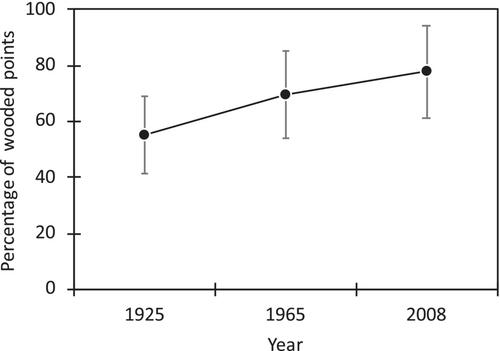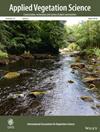Woody plant encroachment in granite barrens on the Frontenac Arch, eastern Ontario, Canada
Abstract
Aims
Woody plant encroachment is a widespread phenomenon affecting treeless or sparsely treed habitats. We aimed to determine the extent and timing of tree and shrub encroachment into rock barrens of eastern Ontario over the last century, and to assess implications for their ongoing management.
Location
Queen's University Biological Station in the Frontenac Arch ecoregion.
Methods
We quantified the extent of change in woody vegetation in 290 rock barrens using aerial photography from 1925, 1965, and 2008. Composition and structure of woody plant communities in 10 barrens was subsequently quantified in the field using plot-based sampling. Cores or cross-sections were obtained from individuals >1.5 m height and dendrochronological techniques were used to determine their age and identify temporal patterns of any woody encroachment.
Results
Aerial photography indicated that the mean proportion of woody plant cover in barrens increased 22.5% from 1925 to 2008. Dendroecological analysis supported this. Few trees were present prior to 1900 and most established since 1960. Fraxinus americana, Juniperus virginiana, and Juniperus communis were the most common woody species colonizing the barrens. Remnants of large Pinus strobus stumps with extensive charring were found in 90% of the sampled barrens at a mean density of 22.6 stumps ha−1.
Conclusions
Rock barrens on the Frontenac Arch have changed substantially over the past century; gradually being colonized by trees and shrubs and losing their distinctly open character. Active management — including prescribed fire and mechanical thinning — may be necessary if there is a desire to maintain these barrens and the rare species they support as components of the region's biodiversity. However, identification of a reference state for restoration is complicated by the fact that the structure and composition of these habitats were undoubtedly altered by European land clearance in the 19th century, and that some of these areas likely existed as pine woodlands before that.


 求助内容:
求助内容: 应助结果提醒方式:
应助结果提醒方式:


